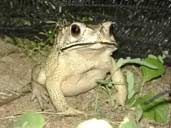 |
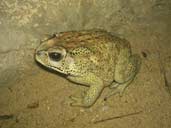 |
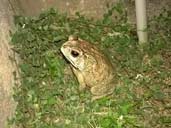 |
Black-Spined Toad Care Sheet
Common names: Black-Spined Toad, Common Indian Toad, Common Asian Toad
Scientific name: Bufo melanostictus , but Duttaphrynus melanostictus is also occasionally used for this species.
Description
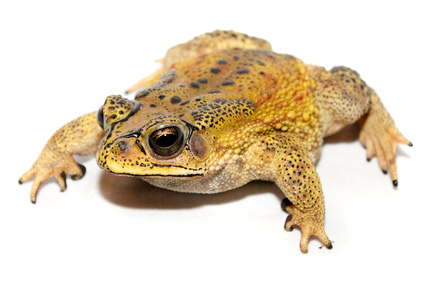 |
| Photo by Brian Gratwicke |
Description: Black-Spined Toads are a medium sized toad with warty skin and noticeable Parotoid glands behind the ridges above their eyes. They tend to be olive brown to dull red in colour, with paler underbellies and a series of boney ridges along their backs, which is what their common name refers to. The black warty bumps along their bodies contain a Bufotoxin that is designed to ward off predators.
Size: Males can grow up to about 8 -10cm (inches), whilst females are larger and can reach about 9 - 11 cm (inches).
Life span: Approximately 10 years.
Origin: Black-Spined Toads are native to South-East Asia, with a large population arising in Singapore. Black-Spined Toads were introduced to Bali and other parts of Eastern Indonesia during the 1950s and are doing well in these areas.
Habitat: Black-Spined Toads are a terrestrial species that usually live in groups and can be found in open grassland and woodland in moist areas near a water source. They make their homes in crevices and under stones and once happy with a hiding place will stay there permanently, returning each morning to the same spot.
They also do well in Suburban areas, as they have adapted to use street lighting to their advantage by crowding around the lights and waiting for any insects that are attracted to become their next meal.
Things to consider before purchasing your first Amphibian
• Who will look after your new pet if you are away?
• Can you obtain its food easily from your local pet shop?
• Would you be comfortable feeding live insects as food?
• Are you comfortable having live food in the house to feed your pet?
• Is the rest of the family happy to live with an amphibian?
Captive Care
Temperament:
Black-Spined Toads are great first amphibians for beginners, because they are docile and relatively easy to care for. They are also a very hardy species, so it is unlikely that your pet will become ill.
Black-Spined Toads are interesting to observe as they will actively hunt for food and will inflate themselves when threatened or disturbed. In the wild this ability would be useful to trick predators into believing that the toad is actually bigger (and harder to swallow) than previously thought, increasing the toad’s chances of being left uneaten.
Black-Spined Toads are a nocturnal species, so are relatively inactive during the day.
They can be kept in small groups without any problems, but should not be kept with any other species.
Feeding
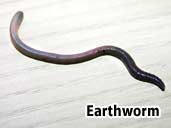 |
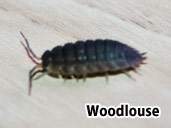 |
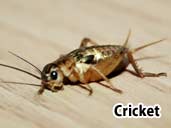 |
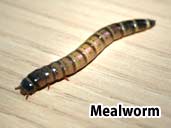 |
Black-Spined Toads can usually handle any prey items that are suitably sized and can fit their mouths, which is probably the reason behind their success in the wild.
Pet Black-Spined toads should be fed a variety of items, such as earthworms, locusts, crickets, cockroaches, mealworms, feeder fish, moths, beetles, woodlice, butterflies, snails and waxworms. Rodents can also be given to your adult Black-Spined Toads, but these should be regarded as treat items as regular feeding of these things as a staple food item can lead to obesity.
Adults should be given calcium and D3 supplements at least twice a week, whilst juveniles will require their food to be dusted more regularly. 2-4 times a week should be sufficient dependant on growth.
Using feeding tongs or forceps is advised when feeding your Black-Spined Toad.
Housing

Black-Spined Toads need fairly large enclosures as they are an active species of toad.
A glass tank, plastic RUB (really useful box) or a terrarium make good homes for Black-Spined Toads, with a 3ft tank being adequate for housing 2-3 inhabitants.
They prefer a woodland/savannah type set up.
Your terrarium should contain:
Substrate
Coco husk, Eco-earth and fertilizer-free soil are good substrates to use, as Black-Spined Toads will appreciate a burrowing substrate. Leaf litter, moss and peat can also be used within the terrarium. A simpler, but less attractive substrate is paper towels. These are cheap, fit for purpose and easy to clean if they become soiled.
Water
All amphibians need fresh water daily. A large, shallow water bowl should be provided containing de-chlorinated or bottled spring water. Tap water may be used as long as it has either been treated with a de-chlorinating solution or been left to stand uncovered for over 24 hours, so that the chlorine can evaporate. The depth of the water should be no higher than the height of your Black-Spined Toads mouth when at rest, as they are not adept at swimming.
If you would like a more elaborate set up then a 50/50 split to the tank is also an option. Dedicate half the terrarium to terrestrial burrowing space and the other half to a water area. A filter may be added to help keep the water clean and it is advisable to have a ramp between the two areas to aid your toad when leaving the water.
Black-Spined Toads, like most amphibians, will soak up water through their skin and since their water bowl is used as the main place to defecate it is important that it is cleaned daily.
Humidity
Black-Spined Toads require relatively high humidity within their terrarium. Lightly misting the terrarium a few times daily with de-chlorinated water in a spray bottle should suffice to keep humidity at the right level for your Black-Spined Toad.
Ensure that between mistings the substrate remains damp, but not water logged.
A place for your Black-Spined Toad to hide
All amphibians require somewhere to hide and may become stressed if this is not provided. Inexpensive plant pots, aquarium ornaments, logs, branches, stones, live and plastic plants can be added to give your Black-Spined Toad the opportunity to hide.
Heat
The ideal temperature for your Black-Spined Toad is around 23-25°C (73- 77°F), with a slight drop to around 16°C (60°F) at night time.
During the summer months, room temperature may be suitable, but in the winter additional heat may be required. Heat should be provided using a heat mat on the side of the tank with an appropriate thermostat. Heat mats should only cover a third of the wall space to allow your Black-Spined Toad to thermo-regulate. The mat should be along the wall space because Black-Spined Toads like to burrow under the substrate, so the risk of burning your toad with a under tank heat mat are higher than with other types of amphibian.
Never use heat lamps or basking lamps for amphibians, as these can cause your Black-Spined Toad to dehydrate.
Lighting
Black-Spined Toads should be kept out of direct sunlight to ensure that the light from the sun does not generate too much heat within the terrarium.
Black-Spined Toads do not need the addition of UV lighting if they have enough vitamins and variation in their diet. Although you may find the live plants in your terrarium will die without any light. A fluorescent UVB tube is ideal as it won’t give out any heat and will help the plants thrive. You should place the light at one side of the terrarium creating a light gradient so your toads can find a darker place out of the light if preferred. Ideally you should cycle the lighting to mimic the toads natural habitat by having a 12/12 system - 12 hours of light and 12 of dark.
Cleaning
Daily spot cleaning is required and any defecation should be removed if possible to do so. You will also need the clean the water bowl daily.
Your entire terrarium should be completely cleaned out on a 2-4 week basis. Your Black-Spined Toad should be moved to a temporary tank whilst being cleaned. All substrate and décor should be removed and refreshed. Use an amphibian safe disinfectant to clean the terrarium to prevent the build up of bacteria, but always ensure that all chemicals are thoroughly rinsed away, so that there is no chance that they will harm your Black-Spined Toad.
Handling
Black-Spined Toads are one of the few amphibians that can be handled, but it should not be done too regularly or for prolonged amounts of time. It is advisable to wash your hands both before and after handling. This is because the white Bufotoxin that oozes out of Black-Spined Toads Parotoid glands is toxic and can cause skin irritations or burn your eyes and mucus membranes.
Black-Spined Toads, like all amphibians, have delicate, absorbent skin and the oils and salts on our hands can cause them harm. Handling your toad with clean, wet hands makes it more unlikely that any substances on our skin will hurt your toad. Alternatively, Latex or surgical gloves can be worn during handling.
Sloughing
Black-Spined Toads shed their skin at regular intervals as they grow. The old skin is pushed off with the hind legs and the skin peels off from the back end. The skin should come off in one piece and is normally eaten by the toad. The skin is pushed forwards using its legs towards the mouth.
Estivation
Estivation is the term given to the period of Hibernation that wild Black-Spined Toads usually go into during the dryer months. They create a cocoon from old skin that helps to seal in moisture whilst the toad buries itself in the ground to wait for the rainy season to come.
Your Black-Spined Toad is unlikely to go into estivation, if temperatures and humidity are controlled successfully, but if you experience a drop in temperatures or humidity within your terrarium, your Black-Spined Toad may start to estivate.
You should not feed or disturb your Black-Spined Toad during estavation, but fresh de-chlorinated water should always be available.
Bring your Black-Spined Toad out of estivation by slowly raising the temperatures or creating higher humidity over a few days. This should awaken your Black-Spined Toad and bring them back to normal activity.
Sexing
The easiest way to determine the sex of your Black-Spined Toad is by listening, as males will call during the mating season. The call of the Black-Spined Toad is a trilling sound so can not be mistaken. They also usually have blacker skin on their throats and develop nuptial pads at this time.
Females are larger and more rounded than the males.
Breeding
Female Black-Spined Toads will only breed once a year, whereas males can manage multiple breedings.
In the wild, Black-Spined Toads will spawn after heavy rains and monsoons, so if you would like to breed your Black-Spined Toads then a rain chamber that mimics this heavy rainfall will need to be used.
Spawn is usually deposited in deep water by the female, who will place the strands around any submerged vegetation within the tank. Plastic or live aquarium plants are fit for this purpose.
Tadpoles are black in colour and need to be feed on a variety of micro-foods such as Daphia, micro-worms and chopped bloodworm until they are large enough to take bigger items.
Other questions about the Black-Spined Toad
If you have any other questions why not join The Amphibian Forum and ask one of the many experienced keepers. The reason this website was set up was so people in the amphibian keeping hobby could share their experiences with others.

